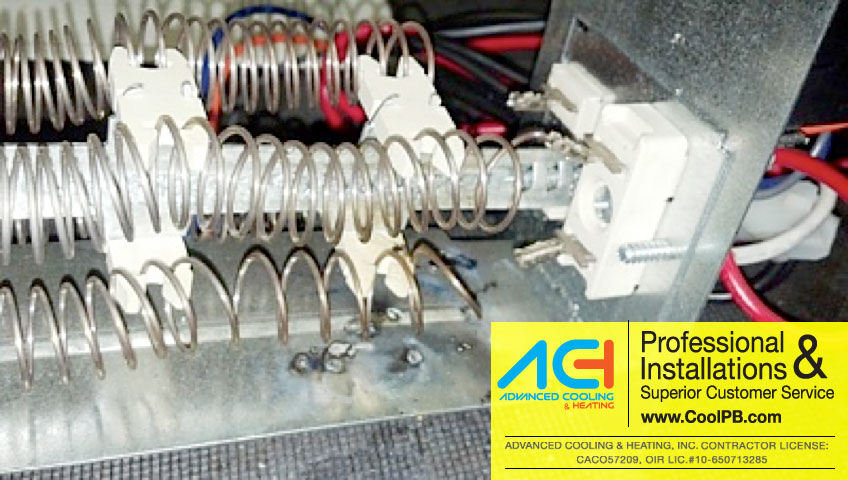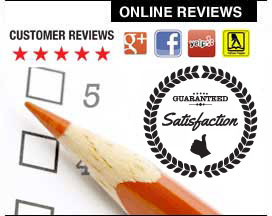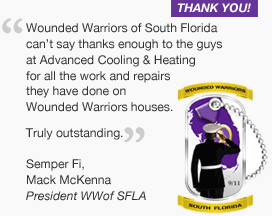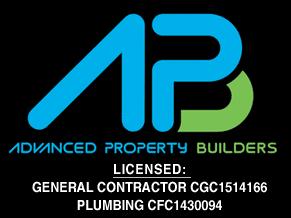First of all, does the unit provide any heat?
If your system is not providing any heat to the home, then you can begin your heat pump troubleshooting at the thermostat.
- Ensure that it is on heat and set above the room temperature. If you have a digital thermostat, then set the desired temperature to about 2-4 degrees above room temperature. This should make only the heat pump part come on and not the backup electric elements. (If you do not have a digital thermostat, we would highly recommend replacing your thermostat.)
- Now, turn the fan switch to on.
Is the fan on the furnace/air handler running?
If the fan doesn’t start, then check the fuses/breakers for the air handler or furnace.
- If the breaker was tripped, the problem could be a bad wiring connection, the blower motor, or the control board.
- If the breaker was not tripped, the problem could be the thermostat, low voltage wiring, or the fan relay.
If the fan is running, turn the thermostat to emergency heat. Ensure that the setpoint is at least 5 degrees above room temp. Wait for about a minute, then check to see if warm air is coming out the vents.
- If there is, then the problem is with the outdoor unit.
- If there is not, the problem could be the thermostat or something in the air handler.
At the outdoor unit…
- If you have decided the problem is with the outdoor unit, return the thermostat to normal from emergency heat. Wait a couple of minutes, then continue your heat pump troubleshooting at the outdoor unit.
- Is there a lot of ice/frost buildup on the unit? If there is, The problem is either a defrost control or the unit could be low on refrigerant. You can test the defrost control by manually forcing it to defrost. On older units, they had a defrost timer motor and you could manually advance the timer motor to initiate defrost. If you do so and the unit does not go into defrost, the timer motor is probably bad. On newer units, they have an electronic defrost control board. They typically have a set of pins that are jumped to manually initiate defrost. If you do so and the unit does not enter defrost mode, the board is probably bad.
- If the fan is running, feel the refrigerant lines. The bigger line should be warm. If it is not, the problem could be a wire in the unit, the compressor run capacitor, compressor, or the unit could be low on refrigerant.
**NOTE** It is best to check the charge of a heat pump with the unit running in the cooling mode. If possible, wait until the outdoor temperature is above 55 degrees.
Final Checks…
The final step in your heat pump troubleshooting should be to run the unit through a normal heating cycle.
It is a good idea to check the temperature rise of the system after it has been running for 10 -15 minutes. You can do so by measuring the temperature of the air coming out of the vents and the temperature of the air entering the fan coil. Subtract the entering air temperature from the leaving air temperature to find the temperature rise. This should typically be 15 to 20 degrees.
A Regular maintenance check-up should include the following and should be performed periodically
- Check thermostat settings to ensure the cooling and heating system keeps you comfortable when you are home and saves energy while you are away.
- Tighten all electrical connections and measure voltage and current on motors. Faulty electrical connections can cause unsafe operation of your system and reduce the life of major components.
- Lubricate all moving parts. Parts that lack lubrication cause friction in motors and increases the amount of electricity you use.
- Check and inspect the condensate drain in your central air conditioner, furnace and/or heat pump (when in cooling mode). A plugged drain can cause water damage in the house and affect indoor humidity levels.
- Check controls of the system to ensure proper and safe operation. Check the starting cycle of the equipment to assure the system starts, operates, and shuts off properly.
Actions To Do Yourself
Inspect, clean, or change air filters once a month in your central air conditioner, furnace, and/or heat pump. Your contractor can show you how to do this. A dirty filter can increase energy costs and damage your equipment, leading to early failure.









